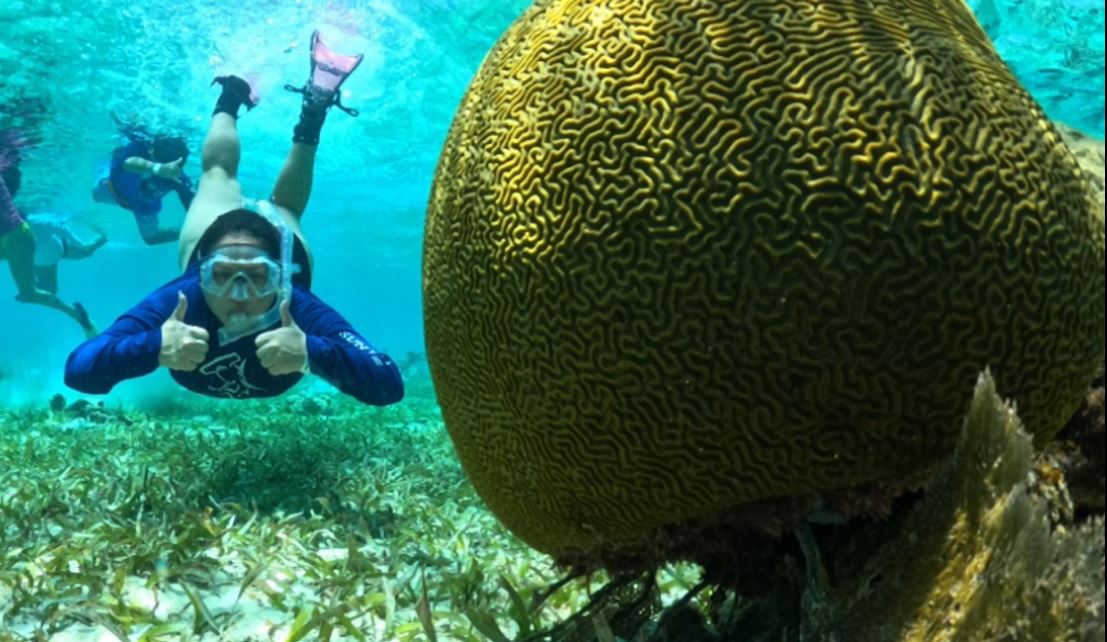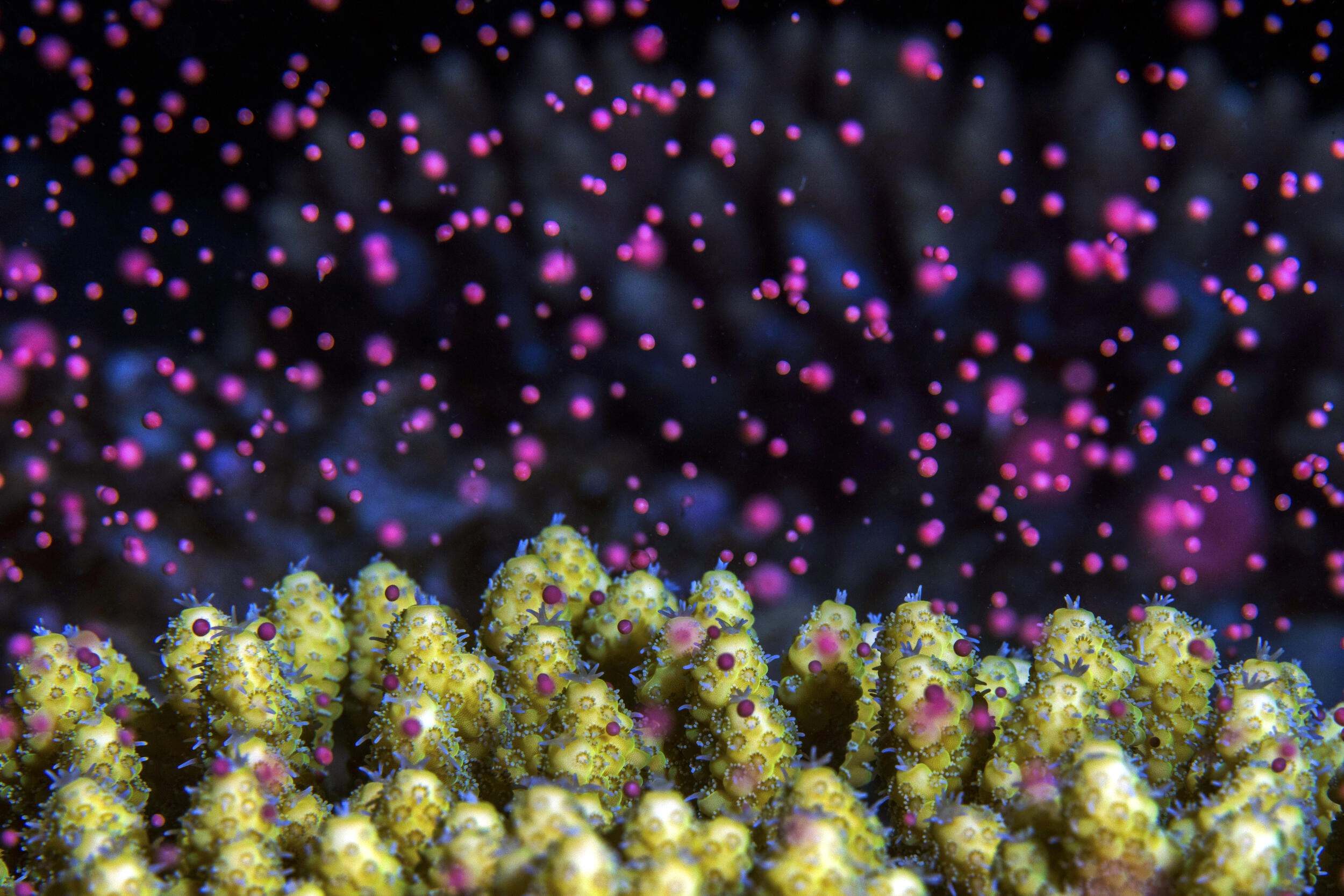Managing Communication to Mitigate Potential Damage of Coral Reef Bleaching
Location
Tioman Island, Malaysia
The challenge
Tioman Island, part of the Tioman archipelago, is located about 55 km off the east coast of the Malaysian Peninsula in the South China Sea. The island is approximately 136 km2, with 14.5 km2 of reefs located primarily off the west coast. The archipelago includes four small islands which are ten to a few hundred meters in length and are surrounded by reefs with 200-300 species of coral in the most diverse areas. Historically, fishing was the mainstay of the communities on Tioman, but more recently dive tourism has grown and now caters to 250,000 tourists each year, the majority of whom are divers or snorkelers. There are six villages scattered around the island, which is home to a population of over 3,700 people. A no-take marine protected area (MPA), established in 1994, surrounds Tioman Island and extends for two nautical miles from the low water mark. Visitors to the island pay a conservation charge of 5 Malaysian Ringgit (RM) (in 2022, approximately US $1.522 for Malaysians; RM 30 (US $7.32) for foreigners which accrues to a Trust Fund.
In March 2010, the National Oceanic and Atmospheric Administration (NOAA) alerted the region to the threat of an imminent coral bleaching event. Observations in May 2010 by Reef Check Malaysia, a local nongovernmental organization, confirmed significant bleaching. Through surveys, Reef Check found that 90% of the corals in Tioman were bleached. The worst of the bleaching came in June and lasted through August. Water temperatures surrounding Tioman Island reached 3-4°C above normal. Reef Check observed that the bleaching affected other islands off the east coast of Malaysia and affected the deepest reefs in the region – as deep as 20 m.
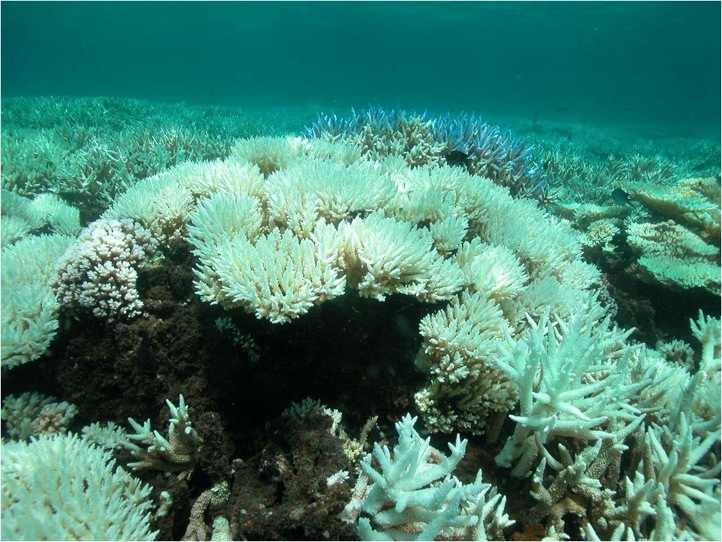
Bleached coral. Photo © Reef Check Malaysia
Actions taken
Institutional Response
Once NOAA alerted the region about bleaching, the Department of Marine Parks Malaysia, the national management authority for natural resources, established a monitoring program. In May 2010, the bleaching event came to the public’s attention when a dive operator from mainland Malaysia returned from a dive trip off Tioman Island and relayed the information to a friend who worked at a local newspaper. With very little scientific or empirical data, the bleaching event was reported in the local news and asserted that the coral reefs around Tioman were all dying due to bleaching. Dive site closures were suggested as one possible management option.
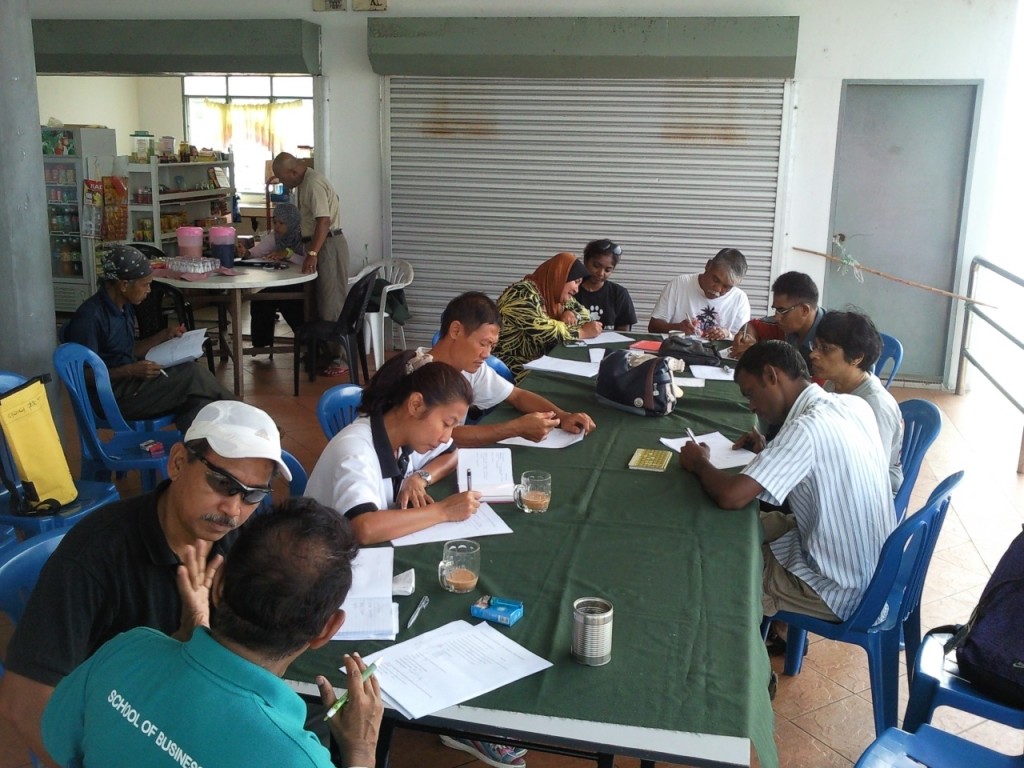
Reef Check Malaysia conducts annual surveys. Photo © Reef Check Malaysia
Reef Check Malaysia took the initiative to use reef resilience concepts to identify which reef sites would be most suitable for protection, with minimal disruption to tourism businesses, in the event site closures were deemed necessary. Reef Check approached dive operators on Tioman and two adjacent islands – Perhentian and Redang. Through discussions, it was determined which sites to close that would have a minimal impact on dive business. Reef Check aimed to close four critical sites on each island for protection. However, before the consultation process was completed, in June 2010, the Department of Marine Parks Malaysia announced area closure plans because of the severity of the bleaching. Due to a lack of clear communication, subsequent news reports (both local and international) suggested that entire islands were being closed to diving, not just selected reef sites. Because of the poor communication, most dive shop operators did not support the government-mandated closures and did not consider the closures when taking tourists to the reefs.
Bleaching Response Plan
In response to the lack of an organized action plan regarding the 2010 bleaching event, Reef Check began writing a bleaching response plan for Malaysia in 2011. The plan was adopted and published by the Department of Marine Parks Malaysia in 2012 and reviewed in 2021. The four major components of the plan are:
- Early warning system
- Ground-truthing survey
- Public awareness and communication exercise
- Resilience building action plan
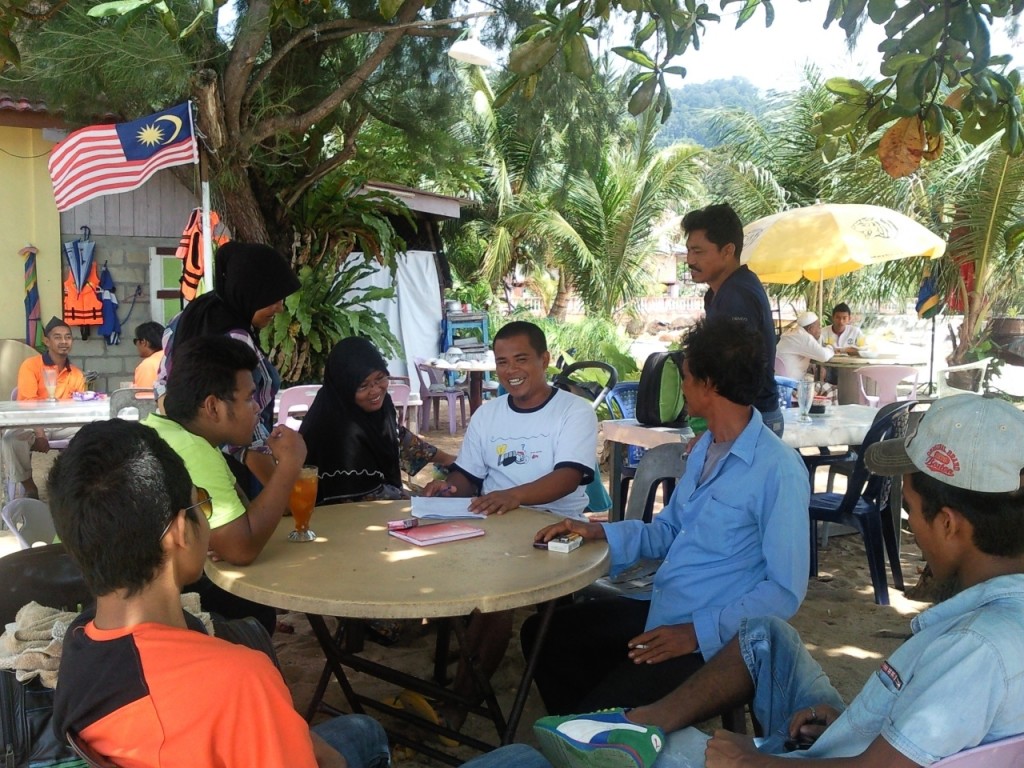
Reef Check Malaysia community consultations. Photo © Reef Check Malaysia
The plan established a Bleaching Response Committee and clearly highlights steps to follow during bleaching events. For example, on receipt of a “bleaching watch” announcement from NOAA, the Committee will automatically issue pre-prepared emails requesting dive operators to conduct weekly Bleaching Watch surveys. In the event the alert level is increased to a “bleaching warning” the Committee will automatically issue invitations to specialists to conduct ground truthing surveys, and if the alert level reaches “bleaching alert level 1” the Committee will automatically issue pre-prepared site closure notices.
The plan includes pre-written press releases and FAQs for use at different stages of a bleaching event, and a database of relevant contacts, including media and dive and resort operators. The plan includes consultation with relevant stakeholders to clearly communicate the bleaching response plan (i.e., site closures).
Since this plan was prepared in 2011, there have been no significant bleaching events in Malaysia. We monitor NOAA sea surface temperatures on a weekly basis; and we ask people to complete Bleaching Watch Forms (also submitted to NOAA). But we have not needed the Plan to be implemented.
Lessons learned and recommendations
- Clarity of Communication – Reef Check Malaysia used a communication response to mitigate the potential damage from a bleaching event. Management can only be effective if stakeholders at all levels know what is going on and where it is happening. Creating a communication plan will ensure everyone will be up-to-date and informed, to prevent misinformation and miscommunication.
- Consultation – It is important to communicate with businesses that will be impacted by a disturbance. It is also important to educate and consult the community. Even if community members are not directly affected by a disturbance, they can help to mitigate damage.
- Increasing Local Resilience – The most common cause of coral bleaching is regional increases in water temperature, a worldwide threat associated with global climate change. Although the cause of the disturbance is not local, the focus must be on local management of threats because this builds resilience. The global nature of this threat means that management of these events becomes just as important as preventing them.
- Local community participation in management – marine resource management in Malaysia adopts a “top-down” approach, with all decision-making centralized. However, it is widely accepted that conservation outcomes can be improved if some form of participatory management is practiced that gives local communities a voice in management. Bleaching response is no exception and, since the local community is the stakeholder most immediately affected by bleaching, it is important that they have a role in monitoring and responding to bleaching events.
Funding summary
Reef Check Malaysia relies on corporate sponsorship for most of its funding, as well as some grant funding:
- Yayasan Hasanah
- Yayasan Sime Darby
- MISC (Malaysian International Shipping Corporation)
- NOAA
- United Nations Development Programme (UNDP)
Lead organizations
Resources
Reef Check Malaysia Annual Survey Report 2020
Reef Check Malaysia Annual Survey Report 2021
Bleaching Watch Survey Reporting Form
Written by: Julian Hyde, Reef Check Malaysia
This case study was adapted from: Cullman, G. (ed.) 2014. Resilience Sourcebook: Case studies of social-ecological resilience in island systems. Center for Biodiversity and Conservation, American Museum of Natural History, New York, NY.

